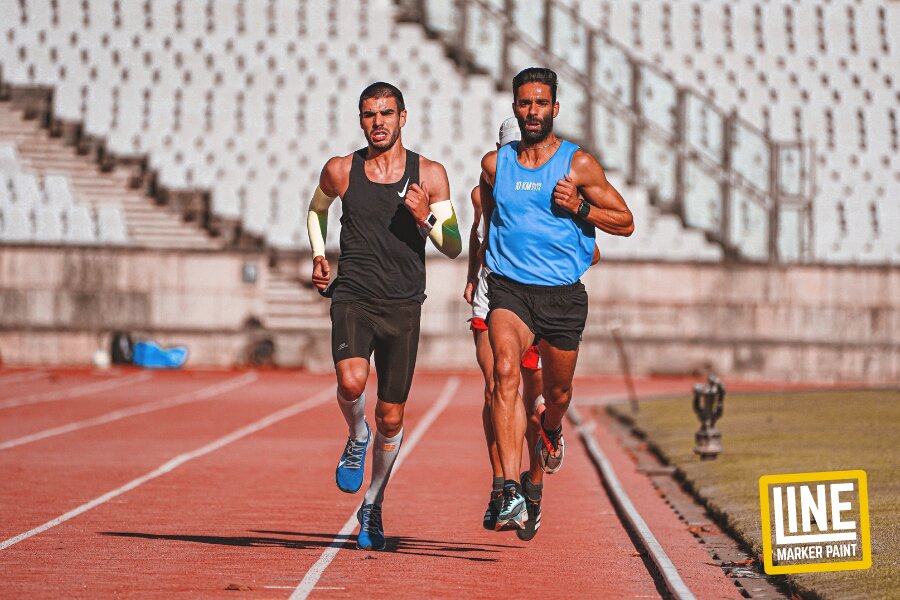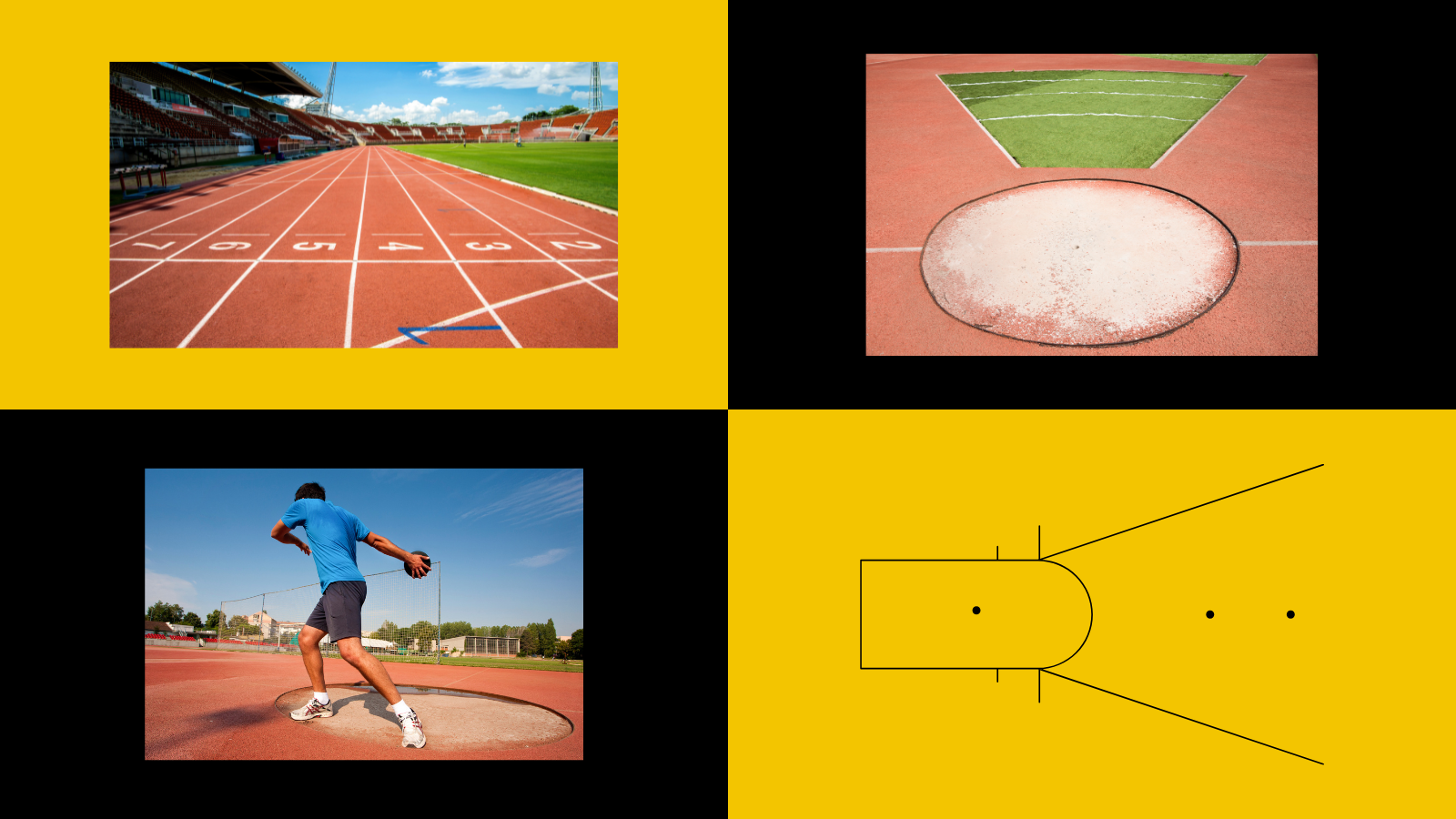The Dimensions of an Athletics Stadium

INTRODUCTION:
Athletics is an umbrella term that includes a wide range of sports, each characterised by unique physical demands, rules, and objectives. From track and field events like sprinting and long jumps to cross-country running, athletics comprises a diverse array of activities that showcase human strength, agility, and skill. Whether performed individually or in a group, these sports not only contribute to physical fitness but also foster qualities such as teamwork, discipline, and perseverance. The world of athletics continues to evolve, with new sports and disciplines emerging, ensuring that there is always something for everyone to enjoy and participate in.
Among all these sports, track and field events hold a special place, as they are often considered the cornerstone of athletics. From the legendary sprinter of all time, Usain Bolt, to the greatest women’s heptathlon athlete, Jackie Joyner-Kersee, track and field athletes have captivated audiences with their incredible speed, strength, and agility. These athletes push the boundaries of human potential, breaking records and inspiring future generations to strive for greatness. But there are some boundaries that they are all happy to play within. So, what are they?
OVERALL DIMENSIONS:
Regardless of the thrill of a sprint race, the grace of a long jump, or the precision of a javelin throw, these track and field events are all performed within a designated space. Each event has specific dimensions that must be adhered to in order to ensure fair competition and safety for the athletes. For example, the track for sprint races must be a certain length and width, while the field for long jump and javelin throw must have specific measurements as well. These dimensions are carefully regulated by governing bodies such as World Athletics, formerly known as the International Association of Athletics Federations, to maintain consistency and fairness across competitions worldwide. This article will focus on running tracks as well as the fields for shot put, discus, and javelin.

RUNNING TRACKS:
The dimensions of a standard 400-metre running track are set and regulated by World Athletics as the minimum size necessary for hosting official competitions. The track takes on the quintessential oval shape and typically features eight lanes, each measuring 1.22 metres (4 feet) in width. There are nine lines in total to form the eight lanes (see measurements below). The first lane measures 400 metres long, and each of the following lanes has an addition of approximately 8 metres. The lines themselves should be 0.05 metres (2 inches) wide. The entire track layout spans 176.91 metres in length and 92.5 metres in width.
| Lanes | 1 | 2 | 3 | 4 | 5 | 6 | 7 | 8 | 9 |
| Length | 400.00 m | 407.67 m | 415.33 m | 423.00 m | 430.66 m | 438.33 m | 446.00 m | 453.66 m | 461.33 m |
In order to include the 100-metre and 110-metre sprints, there will be a rectangular area that measures 130 metres in length and 9.76 metres in width to accommodate these events. The start and finish lines both span 9.76 metres in length. On some high-level tracks, sometimes there will be two waterfall start lines roughly as long as the start lines.
Estimation: With a standard Zebra hard surface line marking machine, approximately 16.78 litres of paint would be needed to form a track that includes all the abovementioned lines.
THROWING EVENTS:
Throwing events, including shot put, discus, and javelin, will require a designated area outside of the track. This area should be large enough to allow athletes to safely throw their equipment without interfering with other events or spectators. Safety measures such as protective barriers or nets may need to be installed to ensure the safety of both athletes and spectators. Each marking line in these areas is 0.05 metres (2 inches) wide.
SHOT PUT:
Regarding shot put, contestants attempt their throws from within a designated circle measuring 2.135 metres in diameter. Positioned at the circle's front is a toe board or stop board standing at a height of 10 centimetres. A dividing line, 75 centimetres in length, is marked on each side of the circle. They are extended from an imaginary line passing through the circle's centre. The shot is required to land within the throwing sector. It is centred on the throwing circle and defined as a circular sector with an angle of 34.92 degrees. Typically, this sector is delineated by two projected sector lines spanning 20 metres, followed by three curved lines measuring 6 metres, 9 metres, and 12 metres.
Estimation: With a standard Zebra hard surface line marking machine, approximately 0.3 litres of paint would be needed to mark a shot put sector.
DISCUS:
A discus throwing sector is similar to that of a shot put. However, the diameter of the throwing circle would be 2.50 metres instead. The two 75-centimetre dividing lines are placed in the same position. A discus is also thrown into a 34.92-degree sector from the throwing circle. The two projected sector lines are roughly 40 metres long, followed by three curved lines measuring 15 metres, 20 metres, and 25 metres.
Estimation: With a standard Zebra hard surface line marking machine, approximately 0.6 litres of paint would be needed to mark a discus sector.
JAVELIN:
Javelin throwers use a 4-metre-wide runway instead of a throwing circle. Javelin athletes could gain significant momentum in a "run-up" before their throw. The runway's length must be within the range of 30 to 36.5 metres. An 8-metre-radius throwing arc joins the ends of the two lines, serving as the reference point from which their throw is measured. Unlike the rest of the lines, the arc has a width of 0.07 metres (3 inches). The middle of the throwing arc serves as the centre of a 28.96º circular sector, towards which the javelin is launched. Moreover, two 75-centimetre dividing lines extend from the two ends of the arc, similar to the shot put and discus sectors. The two projected sector lines have the potential to extend to a length ranging from 90 to 100 metres.
Estimation: With a standard Zebra hard surface line marking machine, approximately 0.99 litres of paint would be needed to mark a javelin sector.
MARKING THE LINE:
Line Marker Paint caters to professionals across diverse industries, providing a comprehensive range of reliable products tailored for precision marking on hard surfaces for sports. The Zebra Line Marking System distinguishes itself with a unique paint formula renowned for its higher concentration of pigment solids, surpassing competitors in the market. This remarkable characteristic allows it to produce precise lines, perfect for various hard surfaces such as athletic tracks, indoor courts, car parks and warehouse floors. The system stands as a popular option in our array of line marking tools and paints.
Marking an athletics ground or stadium can prove challenging due to the varied dimensions required for different activities. Some may require a larger area for specific throwing sector lines, while others emphasise the need for well-organised running tracks. If you seek professional support for your line marking project, our team of experts is ready to offer guidance and assistance. For a precise estimate tailored to your court dimensions, we highly recommend utilising our line marking paint calculator. Should you have any queries or require assistance, feel free to reach out to us via phone or through our Live Chat!
